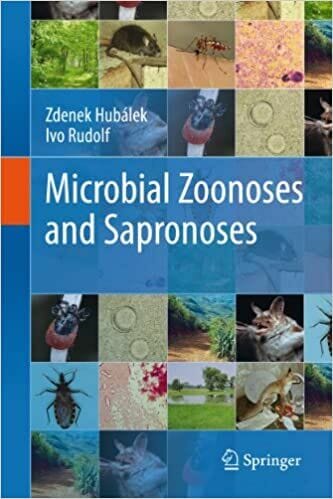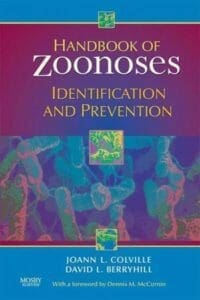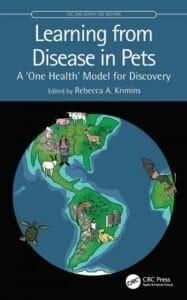Microbial Zoonoses and Sapronoses

By Zdenek Hubálek and Ivo Rudolf
Microbial Zoonoses and Sapronoses Book PDF presents the state of art in the field. It could be used as a textbook or manual in microbiology and medical zoology for students of human and veterinary medicine, including Ph.D. students, and for biomedicine scientists and medical practitioners and specialists as well. Surprisingly, severe zoonoses and sapronoses still appear that are either entirely new (e.g., SARS), newly recognized (Lyme borreliosis), resurging (West Nile fever in Europe), increasing in incidence (campylobacterosis), spatially expanding (West Nile fever in the Americas), with a changing range of hosts and/or vectors, with changing clinical manifestations or acquiring antibiotic resistance. The collective term for those diseases is (re)emerging infections, and most of them represent zoonoses and sapronoses (the rest are anthroponoses). The number of known zoonotic and sapronotic pathogens of humans is continually growing – over 800 today. In the introductory part, short characteristics are given of infectious and epidemic process, including the role of environmental factors, possibilities of their epidemiological surveillance, and control. Much emphasis is laid on ecological aspects of these diseases (haematophagous vectors and their life history; vertebrate hosts of zoonoses; habitats of the agents and their geographic distribution; natural focality of diseases). Particular zoonoses and sapronoses are then characterized in the following brief paragraphs: source of human infection; animal disease; transmission mode; human disease; epidemiology; diagnostics; therapy; geographic distribution.
| File Size | 25 MB |
| File Format | |
| Download link | Free Download | Become a Premium, Lifetime Deal |
| Support & Updates | Contact Us | Broken Link |
| Join Our Telegram Channel |  |
| More Books: | Browse All Categories |













![Ettinger’s Textbook of Veterinary Internal Medicine 9th Edition [PDF+Videos] Ettinger’s Textbook of Veterinary Internal Medicine 9th Edition [True PDF+Videos]](https://www.vet-ebooks.com/wp-content/uploads/2024/10/ettingers-textbook-of-veterinary-internal-medicine-9th-edition-100x70.jpg)

![Textbook of Veterinary Diagnostic Radiology 8th Edition [PDF+Videos+Quizzes] Thrall’s Textbook of Veterinary Diagnostic Radiology, 8th edition PDF](https://www.vet-ebooks.com/wp-content/uploads/2019/09/textbook-of-veterinary-diagnostic-radiology-8th-edition-100x70.jpg)






